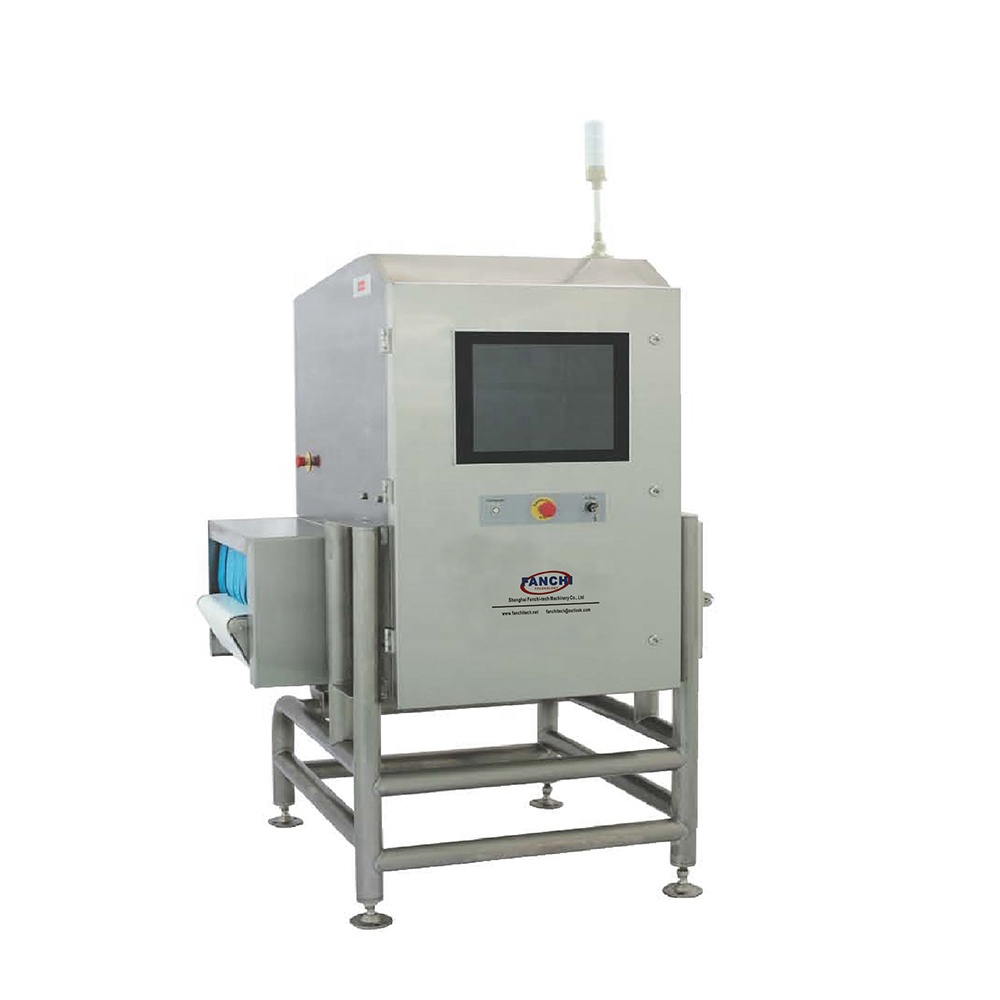X-ray inspection machines rely heavily on their built-in detection technology and algorithms when distinguishing between metals and foreign objects. For example, metal detectors (including food metal detectors, plastic metal detectors, prepared food metal detectors, prepared food metal detectors, etc.) mainly use the principle of electromagnetic induction to detect metal foreign objects. When a metal object enters the detection area of a metal detector, it disrupts the equilibrium magnetic field formed by the transmitter and receiver, creating a signal change on the receiver that triggers an alarm and indicates the presence of a metal foreign object.
However, for non-metallic foreign objects such as stones, glass, bones, plastics, etc., metal detectors cannot detect them directly. In this case, other types of foreign body detection machines, such as X-ray inspection machines (also known as X-ray foreign body inspection machines or X-ray foreign body inspection machines) are required to perform the inspection.
X-ray inspection machine uses the penetration ability of X-rays to identify and distinguish metallic and non-metallic foreign bodies inside the object by measuring the degree of attenuation of X-rays after penetrating the inspected object, and combining image processing technology. X-rays can penetrate most non-metallic substances, but strong attenuation occurs when encountering high-density substances such as metals, thus forming a clear contrast on the image and enabling the accurate identification of metallic foreign bodies.
As a result, the distinction between metal and foreign matter in foreign body detectors varies depending on the detection technology and algorithm used. Metal detectors are primarily used to detect metallic foreign objects, while x-ray detectors are able to detect a wide range of foreign objects, both metallic and non-metallic, more comprehensively.
In addition, as technology continues to evolve, some advanced foreign body detectors may also use a combination of multiple detection technologies to achieve more accurate and comprehensive detection of different types of foreign bodies. For example, some devices may integrate both metal detection and X-ray detection capabilities to improve the accuracy and reliability of inspections.
Post time: Sep-28-2024






